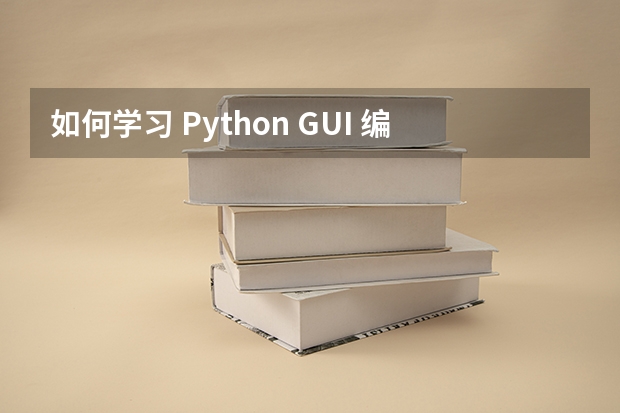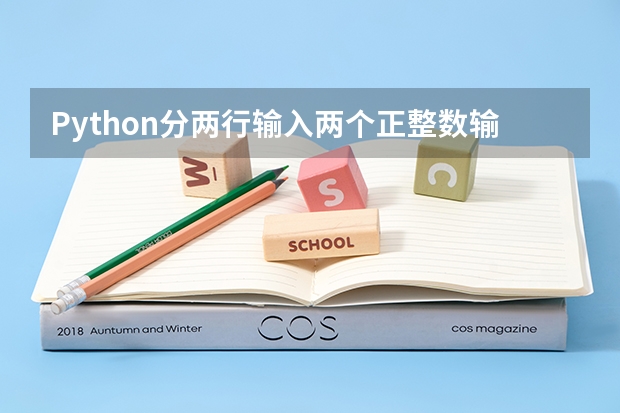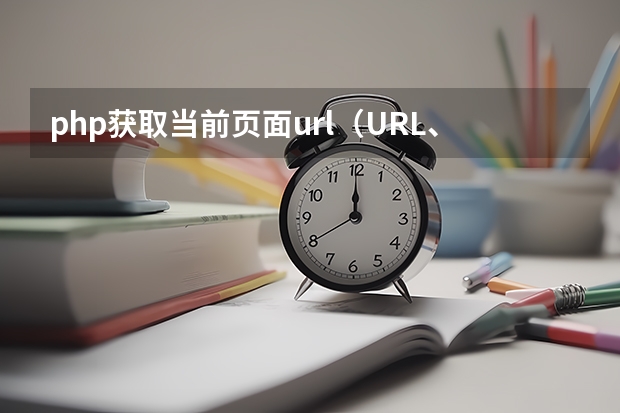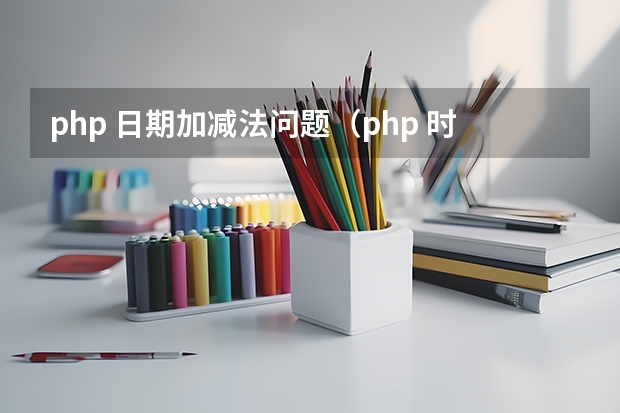如何学习 Python GUI 编程
2024-03-03 01:31:42 | 我爱编程网
本文目录一览:

如何学习 Python GUI 编程
在
网页中下载python3解释器,我下载时候,版本是选择的是3.3,因为python3和python2语法上有些区别,所以大家就跟我一样都用python3吧,或许有朋友对于“语法”这个词不明白,没关系,后面小编会给大家讲到的。下好后,文件名为python-3.3.3.msi,当然因为我们下载时间不同,可能文件有所不同,比如你下的可能是python-3.4.0.msi,因为这个软件也是在不断升级中的
双击下载下来的安装文件,一路都选“next”,到第三步“Customize Python ”,在列表中的“Add python.exe to Path”前的红叉上点击鼠标左键,然后选择第一项“will be installed on local hard drive”,然后再点next,再稍等几分钟,python的解释器就安装好了。
然后我们在“开始”-->“所有程序”中找到python
选择IDLE(Python GUI),这是一个提供图形化界面的python编程软件,如果不用这个,我们就只有用那个黑色的框框了。打开IDLE,界面如下:
看到光标在“>>>”后面闪烁了吧,我们在“>>>”后面输入命令,按下回车后,python解释器就会解释并执行这条命令了。好了,我们还是以最经典的入门程序来作为我们用python写的第一个程序吧。我们用键盘敲入“print("hello world")”,在屏幕上显示“hello word”,注意print后的括号是英文括号,而且编程语言中的符号都是英文符号,大家特别注意。敲下回车后,看到下面是不是显示了“hello world”,注意此时 hello world前没有“>>>”,这个表明“hello world”是输出结果。
接下来我们输出一句中文,我们键入命令“print("你好,朋友")”,按下回车后,我们也会看到下面显示了“你好,朋友”,注意我在描述时都为命令加了双引号用于区别,大家在敲入命令时是不需要最外面的双引号的,但是print中是需要双引号的。

如何用 Python 写一个带 GUI 的科学计算程序
使用Tkinter图形库,如果你是用的linux系统 记得将第一行改为from tkinter import *
这个代码实现的挺简单,并不是很复杂的科学计算器界面,你可以以此为基础,添加自己想要的东西:给你个截图:
代码是如下, 我就不给你添注释了啊:
#!/usr/bin/env python3.4
from Tkinter import *
import parser
root = Tk()
root.title('Calculator')
i = 0
def factorial():
"""Calculates the factorial of the number entered."""
whole_string = display.get()
number = int(whole_string)
fact = 1
counter = number
try:
while counter > 0:
fact = fact*counter
counter -= 1
clear_all()
display.insert(0, fact)
except Exception:
clear_all()
display.insert(0, "Error")
def clear_all():
"""clears all the content in the Entry widget"""
display.delete(0, END)
def get_variables(num):
"""Gets the user input for operands and puts it inside the entry widget"""
global i
display.insert(i, num)
i += 1
def get_operation(operator):
"""Gets the operand the user wants to apply on the functions"""
global i
length = len(operator)
display.insert(i, operator)
i += length
def undo():
"""removes the last entered operator/variable from entry widget"""
whole_string = display.get()
if len(whole_string): ## repeats until
## now just decrement the string by one index
new_string = whole_string[:-1]
print(new_string)
clear_all()
display.insert(0, new_string)
else:
clear_all()
display.insert(0, "Error, press AC")
def calculate():
"""
Evaluates the expression
ref :
-parsing-in-python
"""
whole_string = display.get()
try:
formulae = parser.expr(whole_string).compile()
result = eval(formulae)
clear_all()
display.insert(0, result)
except Exception:
clear_all()
display.insert(0, "Error!")
root.columnconfigure(0,pad=3)
root.columnconfigure(1,pad=3)
root.columnconfigure(2,pad=3)
root.columnconfigure(3,pad=3)
root.columnconfigure(4,pad=3)
root.rowconfigure(0,pad=3)
root.rowconfigure(1,pad=3)
root.rowconfigure(2,pad=3)
root.rowconfigure(3,pad=3)
display = Entry(root, font = ("Calibri", 13))
display.grid(row = 1, columnspan = 6 , sticky = W+E)
one = Button(root, text = "1", command = lambda : get_variables(1), font=("Calibri", 12))
one.grid(row = 2, column = 0)
two = Button(root, text = "2", command = lambda : get_variables(2), font=("Calibri", 12))
two.grid(row = 2, column = 1)
three = Button(root, text = "3", command = lambda : get_variables(3), font=("Calibri", 12))
three.grid(row = 2, column = 2)
four = Button(root, text = "4", command = lambda : get_variables(4), font=("Calibri", 12))
four.grid(row = 3 , column = 0)
five = Button(root, text = "5", command = lambda : get_variables(5), font=("Calibri", 12))
five.grid(row = 3, column = 1)
six = Button(root, text = "6", command = lambda : get_variables(6), font=("Calibri", 12))
six.grid(row = 3, column = 2)
seven = Button(root, text = "7", command = lambda : get_variables(7), font=("Calibri", 12))
seven.grid(row = 4, column = 0)
eight = Button(root, text = "8", command = lambda : get_variables(8), font=("Calibri", 12))
eight.grid(row = 4, column = 1)
nine = Button(root , text = "9", command = lambda : get_variables(9), font=("Calibri", 12))
nine.grid(row = 4, column = 2)
cls = Button(root, text = "AC", command = clear_all, font=("Calibri", 12), foreground = "red")
cls.grid(row = 5, column = 0)
zero = Button(root, text = "0", command = lambda : get_variables(0), font=("Calibri", 12))
zero.grid(row = 5, column = 1)
result = Button(root, text = "=", command = calculate, font=("Calibri", 12), foreground = "red")
result.grid(row = 5, column = 2)
plus = Button(root, text = "+", command = lambda : get_operation("+"), font=("Calibri", 12))
plus.grid(row = 2, column = 3)
minus = Button(root, text = "-", command = lambda : get_operation("-"), font=("Calibri", 12))
minus.grid(row = 3, column = 3)
multiply = Button(root,text = "*", command = lambda : get_operation("*"), font=("Calibri", 12))
multiply.grid(row = 4, column = 3)
divide = Button(root, text = "/", command = lambda : get_operation("/"), font=("Calibri", 12))
divide.grid(row = 5, column = 3)
# adding new operations
pi = Button(root, text = "pi", command = lambda: get_operation("*3.14"), font =("Calibri", 12))
pi.grid(row = 2, column = 4)
modulo = Button(root, text = "%", command = lambda : get_operation("%"), font=("Calibri", 12))
modulo.grid(row = 3, column = 4)
left_bracket = Button(root, text = "(", command = lambda: get_operation("("), font =("Calibri", 12))
left_bracket.grid(row = 4, column = 4)
exp = Button(root, text = "exp", command = lambda: get_operation("**"), font = ("Calibri", 10))
exp.grid(row = 5, column = 4)
## To be added :
# sin, cos, log, ln
undo_button = Button(root, text = "<-", command = undo, font =("Calibri", 12), foreground = "red")
undo_button.grid(row = 2, column = 5)
fact = Button(root, text = "x!", command = factorial, font=("Calibri", 12))
fact.grid(row = 3, column = 5)
right_bracket = Button(root, text = ")", command = lambda: get_operation(")"), font =("Calibri", 12))
right_bracket.grid(row = 4, column = 5)
square = Button(root, text = "^2", command = lambda: get_operation("**2"), font = ("Calibri", 10))
square.grid(row = 5, column = 5)
root.mainloop()

Python 中用 Tkinter GUI编程
我爱编程网(https://www.52biancheng.com)小编还为大家带来Python 中用 Tkinter GUI编程的相关内容。
可以使用sqlite,下面是使用方法。
导入Python SQLITE数据库模块
Python2.5之后,内置了SQLite3,成为了内置模块,这给我们省了安装的功夫,只需导入即可~
import sqlite3
2. 创建/打开数据库
在调用connect函数的时候,指定库名称,如果指定的数据库存在就直接打开这个数据库,如果不存在就新创建一个再打开。
cx = sqlite3.connect("E:/test.db")
也可以创建数据库在内存中。
con = sqlite3.connect(":memory:")
3.数据库连接对象
打开数据库时返回的对象cx就是一个数据库连接对象,它可以有以下操作:
commit()--事务提交
rollback()--事务回滚
close()--关闭一个数据库连接
cursor()--创建一个游标
关于commit(),如果isolation_level隔离级别默认,那么每次对数据库的操作,都需要使用该命令,你也可以设置isolation_level=None,这样就变为自动提交模式。
4.使用游标查询数据库
我们需要使用游标对象SQL语句查询数据库,获得查询对象。 通过以下方法来定义一个游标。
cu=cx.cursor()
游标对象有以下的操作:
execute()--执行sql语句
executemany--执行多条sql语句
close()--关闭游标
fetchone()--从结果中取一条记录,并将游标指向下一条记录
fetchmany()--从结果中取多条记录
fetchall()--从结果中取出所有记录
scroll()--游标滚动
1. 建表
cu.execute("create table catalog (id integer primary key,pid integer,name varchar(10) UNIQUE,nickname text NULL)")
上面语句创建了一个叫catalog的表,它有一个主键id,一个pid,和一个name,name是不可以重复的,以及一个nickname默认为NULL。
2. 插入数据
请注意避免以下写法:
# Never do this -- insecure 会导致注入攻击
pid=200
c.execute("... where pid = '%s'" % pid)
正确的做法如下,如果t只是单个数值,也要采用t=(n,)的形式,因为元组是不可变的。
for t in[(0,10,'abc','Yu'),(1,20,'cba','Xu')]:
cx.execute("insert into catalog values (?,?,?,?)", t)
简单的插入两行数据,不过需要提醒的是,只有提交了之后,才能生效.我们使用数据库连接对象cx来进行提交commit和回滚rollback操作.
cx.commit()
3.查询
cu.execute("select * from catalog")
要提取查询到的数据,使用游标的fetch函数,如:
In [10]: cu.fetchall()
Out[10]: [(0, 10, u'abc', u'Yu'), (1, 20, u'cba', u'Xu')]
如果我们使用cu.fetchone(),则首先返回列表中的第一项,再次使用,则返回第二项,依次下去.
4.修改
In [12]: cu.execute("update catalog set name='Boy' where id = 0")
In [13]: cx.commit()
注意,修改数据以后提交
5.删除
cu.execute("delete from catalog where id = 1")
cx.commit()
6.使用中文
请先确定你的IDE或者系统默认编码是utf-8,并且在中文前加上u
x=u'鱼'
cu.execute("update catalog set name=? where id = 0",x)
cu.execute("select * from catalog")
cu.fetchall()
[(0, 10, u'\u9c7c', u'Yu'), (1, 20, u'cba', u'Xu')]
如果要显示出中文字体,那需要依次打印出每个字符串
In [26]: for item in cu.fetchall():
....: for element in item:
....: print element,
....:
0 10 鱼 Yu
1 20 cba Xu
7.Row类型
Row提供了基于索引和基于名字大小写敏感的方式来访问列而几乎没有内存开销。 原文如下:
sqlite3.Row provides both index-based and case-insensitive name-based access to columns with almost no memory overhead. It will probably be better than your own custom dictionary-based approach or even a db_row based solution.
Row对象的详细介绍
class sqlite3.Row
A Row instance serves as a highly optimized row_factory for Connection objects. It tries to mimic a tuple in most of its features.
It supports mapping access by column name and index, iteration, representation, equality testing and len().
If two Row objects have exactly the same columns and their members are equal, they compare equal.我爱编程网
Changed in version 2.6: Added iteration and equality (hashability).
keys()
This method returns a tuple of column names. Immediately after a query, it is the first member of each tuple in Cursor.description.
New in version 2.6.
下面举例说明
In [30]: cx.row_factory = sqlite3.Row
In [31]: c = cx.cursor()
In [32]: c.execute('select * from catalog')
Out[32]:
In [33]: r = c.fetchone()
In [34]: type(r)
Out[34]:
In [35]: r
Out[35]:
In [36]: print r
(0, 10, u'\u9c7c', u'Yu')
In [37]: len(r)
Out[37]: 4
In [39]: r[2] #使用索引查询
Out[39]: u'\u9c7c'
In [41]: r.keys()
Out[41]: ['id', 'pid', 'name', 'nickname']
In [42]: for e in r:
....: print e,
....:
0 10 鱼 Yu
使用列的关键词查询
In [43]: r['id']
Out[43]: 0
In [44]: r['name']
Out[44]: u'\u9c7c'
免责声明:文章内容来自网络,如有侵权请及时联系删除。

编程小白怎么学习Python呀_python编程入门自学python学习的基本步骤如下:python基础,了解python的数据类型python爬虫,了解网页结构,了解python爬虫知识,了解数据库知识python数据分析,了解数据分析库python机器学习,了解建模知识这是学习python的基本学习框架,都是和数据在打关系,从收集数据,整理数据,到数据建模

学习Python编程工作好找吗一、自动化工具开发企业往往会需求自动化办公系统等多种多样的自动化开发工具,而根据公司业务的不同,开发需求自然而然会有所不同,通常需要根据实际需求定制,对开源软件进行二次开发,或者是自行开发相应的业务系统和工具。二、业务技术架构评估和优化代码本身的优劣足以影响到访问效率的高低,而这种影响是很难通过后天的集群和服务器的优化而有所改善的。而具备开发

零基础如何学习Python?第一:找到一个好的教程可以买本书,跟着书学习,书上的例子可以跟着写,课后的习题尽量做。没有买书的朋友,可以从网上找教程,在浩瀚如烟的互联网上,没有你找不到的,只有你想不到的。彻底0基础的朋友,建议先确定自己是否对Python感兴趣,兴趣是好的老师,只有在兴趣的驱动下你才能坚定不移克服学习上遇到的困难。课课家Python从入门到精通视频教程第二,循序渐

学python的软件学python的软件《python利器》、《Python编程狮》、《在线学Python》、《Python语言学习》、《Python编译器》。1、《python利器》《python利器》是一款可以帮助我们自主学习编程知识的应用软件。利用这个软件,大家可以轻松地了解Python语言背后的简单语法,并能够创作和生成对应的程序。此外,该软件还能让我们了解编程行业

编程语言python入门要学习哪些?学习python,主要学习ython基础语法、数据类型、字符编码、文件操作、函数、装饰器、迭代器、内置方法、常用模块等;之后再进阶学习,如框架等。阶段一:Python开发基础Python全栈开发与人工智能之Python开发基础知识学习内容包括:Python基础语法、数据类型、字符编码、文件操作、函数、装饰器、迭代器、内置方法、常用模块等。

学python的软件学python的软件《python利器》、《Python编程狮》、《在线学Python》、《Python语言学习》、《Python编译器》。1、《python利器》《python利器》是一款可以帮助我们自主学习编程知识的应用软件。利用这个软件,大家可以轻松地了解Python语言背后的简单语法,并能够创作和生成对应的程序。此外,该软件还能让我们了解编程行业

零基础如何学习Python进步快?学习Python对于零基础的人来说可能会有些困难,但是只要你有恒心和毅力,就一定能够取得进步。以下是一些建议:1.选择合适的教材或课程:对于初学者来说,选择一本适合自己的教材或者在线课程非常重要。你可以根据自己的需求和兴趣来选择,比如《Python编程快速上手——让繁琐工作自动化》、《Python编程从入门到实践》等。2.制定学习计划:制定

想要学python,对编程一窍不通的人可以学习吗?Python适合哪些人学?没有基础能不能学Python?Python语言在时代的浪潮中崛起,速度之快,影响之巨大,影响力已经远远超出我们的想象。伴随着人工智能时代的到来,Python开始变得非常之火。那么,没有基础能学Python吗?下面来看看吧。首先,我们不得不要去了解一下Python到底适合哪些人学?1.编程菜鸟新手:非
- php提供的函数 100个最常用的PHP函数(记得收藏哦)
- php中function函数的用法(PHP正则表达式的使用技巧)
- PHP8中查询数组中指定元素-PHP8知识详解(在PHP8中统计数组元素个数-PHP8知识详解)
- php随机数函数(PHP中的函数)
- php中统计数组的长度是那个函数?(PHP开发中(Array)数组函数大全)
- php引用赋值和global的问题,这里为什么输出为2??global的var1,var2引用的是
- php声明数组函数 php array_map()数组函数使用说明
- php stripslashes和addslashes的区别 addslashes函数定义
- 急求!php 已经知道第几周 如何用第几周知道是几年几月几号 到 几年几月几号?
- php时间格式怎么转换?
- php如何把id相同的累计求和
- PHP max提示和注释 php vprintf提示和注释
-
 在线急求 PHP解密(PHP解密 (base64_decode))
在线急求 PHP解密(PHP解密 (base64_decode))2025-02-01 20:24:39
-
 Python分两行输入两个正整数输出两个数的和差怎么写?
Python分两行输入两个正整数输出两个数的和差怎么写?2024-01-05 14:11:24
-
 PHP文件及运行(适合PHP初学者)(PHP开发常用的4种运行方式)
PHP文件及运行(适合PHP初学者)(PHP开发常用的4种运行方式)2025-02-10 15:19:48
-
 PHP开发中(Array)数组函数大全(100个最常用的PHP函数(记得收藏哦))
PHP开发中(Array)数组函数大全(100个最常用的PHP函数(记得收藏哦))2025-01-28 17:58:32
-
 php获取当前页面url(URL、表单数据、IP等处理类,url表单_PHP教程)
php获取当前页面url(URL、表单数据、IP等处理类,url表单_PHP教程)2025-02-12 03:21:37
-
 php 日期加减法问题(php 时间加减)
php 日期加减法问题(php 时间加减)2024-11-22 05:08:01